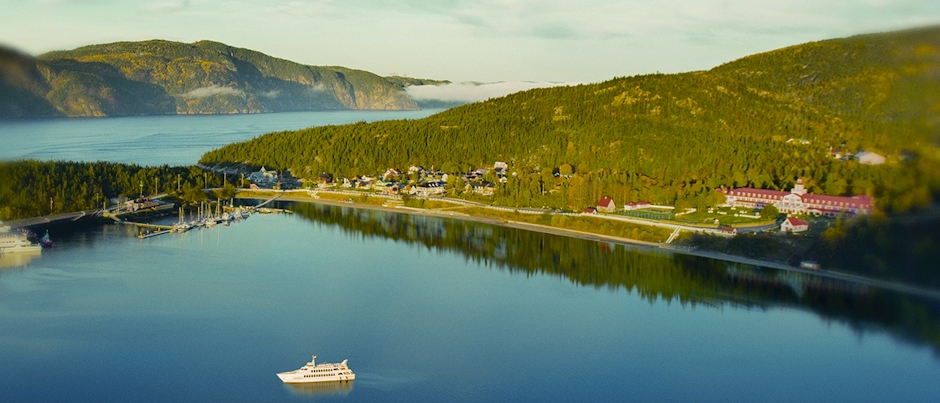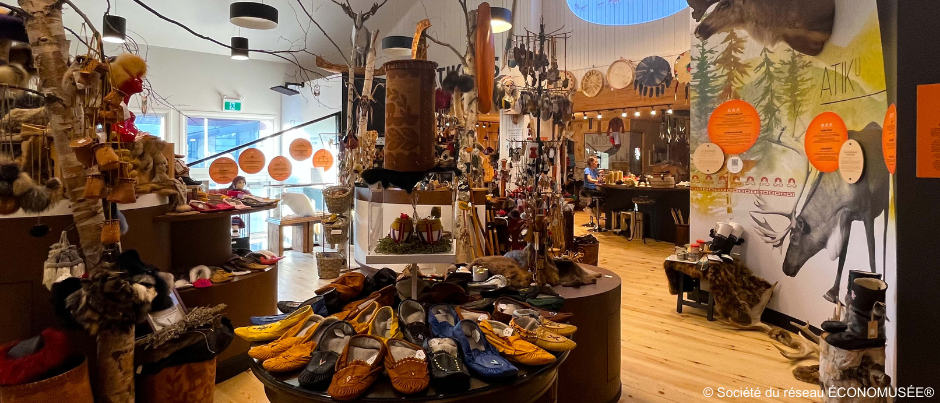The Québec maritime Blog

-
Tadoussac Bay
Photo Plein Ciel / Tourisme Côte-Nord - Manicouagan
Everything You Need to Know to Plan a Trip to Côte-Nord
Are you planning a vacation in Côte-Nord, in the province of Québec? Read on to find out everything you need to know to plan a memorable trip in this region!
Côte-Nord (which literally means “north shore”) covers an immense, wild and fascinating territory. From Tadoussac to Blanc-Sablon and from the St. Lawrence Estuary to northern Québec, Côte-Nord will offer you spectacular scenery on a grand scale throughout your trip. This is a region known for whale watching, northern lights and wide-open spaces, but it’s also home to cultural and historic gems you won’t want to miss.
How to get there

To get to Côte-Nord from Québec City, take Route 138, which is also known as the Whale Route, and soak up the stunning landscapes that will unfold before your eyes.
You can also fly to Côte-Nord and rent a car once you’ve arrived.
Finally, one of the most interesting ways to get to Côte-Nord is by ferry. If you’re travelling from Bas-Saint-Laurent or Gaspésie, four ferries can take you from these regions to Côte-Nord, a journey that can be incorporated into any of the St. Lawrence road trips.

You should also know that part of what is known as the Lower North Shore, between Kegaska and Blanc-Sablon, has no road access. To get there, you can board the MV Bella Desgagnés, a supply ship that stops in the remote villages of this area. The ship departs from Rimouski (in Bas-Saint-Laurent), and you can also board it in Sept-Îles, among other places. The crew will ensure you’re comfortable for the duration of your voyage.
Nature’s playground

The Whale Route runs along the coast of the region and offers many whale-watching opportunities. You can also learn more about cetaceans by visiting the Marine Mammal Observation Centre (CIMM) in Tadoussac, the Cap-de-Bon-Désir Interpretation and Observation Centre in Les Bergeronnes and the Marine Environment Discovery Centre in Les Escoumins. You can then go on a whale-watching excursion in the Saguenay–St. Lawrence Marine Park to admire these impressive marine mammals up close.
Côte-Nord offers many observation sites for wildlife enthusiasts, especially bird lovers. You can head out to the Sept Îles Archipelago to admire razorbills on Corossol Island; visit Parc Nature de Pointe-aux-Outardes, a nature park, where you can observe several hundred species of birds; or explore the Mingan Archipelago National Park Reserve (selected as one of “52 Places to Go in 2024” by the New York Times), where you can see exotic-looking Atlantic puffins, among other species. You can also go on an excursion to the Mingan Islands with Famille Loiselle to discover this exceptional archipelago and observe marine wildlife, including many species of seabirds.

The vast landscapes of Côte-Nord also offer the opportunity to enjoy many outdoor activities, including sea kayaking. For example, you can go paddling in Saint-Pancrace Bay with Attitude Nordique or explore the waters of the Mingan Archipelago National Park Reserve with the guides at Noryak Aventures. You can also discover mysterious monoliths during a hike on the islands of this archipelago or admire the majestic Saguenay Fjord along the trails in Parc national du Fjord-du-Saguenay.
To contemplate the scenery of Côte-Nord from a completely different angle, go on a tourist flight with Totem Aviation. From the air, you can watch maritime traffic on the St. Lawrence and may even spot marine mammals!
Side trip: Anticosti Island
To extend your adventures in Côte-Nord, you may want to discover the flora and fauna of Anticosti Island. Sixteen times the size of the Island of Montréal, Anticosti is home to a thousand natural treasures as well as over 115,000 white-tailed deer!
Regional culture and heritage

Côte-Nord has a unique geological history that was marked by the impact of a meteorite about 214 million years ago, which formed the Manicouagan impact crater: the resulting reservoir can be seen from space! Located on the edge of the Manicouagan Reservoir, the Uapishka Station offers an immersive experience of Innu culture on a territory that’s been home to this First Nation for thousands of years. Packages can include hiking, kayaking, interpretive activities focused on Innu heritage, lodging and more.
Further south, you’ll be impressed by the architecture of Manic-5, the world’s largest multiple-arch-and-buttress dam. You can also visit the Manic-2 dam on your way back to Baie-Comeau via Route 389. Another hydropower generating station to visit is Romaine-1 in Havre-Saint-Pierre.
All along Route 138, you’ll have many opportunities to admire the St. Lawrence, sunrises and impressive scenery. As you travel, detour off the main road to visit the region’s many lighthouses. Proud witnesses to Côte-Nord’s maritime history, several are open to the public. To find out more, consult the Lighthouse Trail travel itinerary.
Throughout Côte-Nord, you’ll also come across many sites that will immerse you in Innu history and culture, including the Chauvin Trading Post in Tadoussac, the Centre Archéo Topo in Les Bergeronnes, the Atikuss maskisin economuseum in Uashat, the Old Trading Post in Sept-Îles and Apenepehekat Island in Unamen Shipu (La Romaine).
In Natashquan, which is the birthplace of famous Québec singer/songwriter and poet Gilles Vigneault, be sure to visit the Les Galets heritage site (a cluster of cod-fishing warehouses), which will welcome you in a stunning setting. The presence of an Innu community in this village gives it a unique identity, which you can learn more about during your visit.
Local artisans: A feast for your eyes and taste buds

Given the region’s geography, it’s not surprising that regional specialties come from the sea and forest. Sample delicious seafood delicacies including snow crab, scallops, northern shrimp, sea urchins and Stimpson’s surf clams, along with wild berries such as cloudberries, strawberries, raspberries and blueberries. You’ll also want to try Labrador tea, which First Nations people drink as herbal medicine to treat ailments such as rheumatism or headaches.
During your stay, you will also have many opportunities to meet local artisans. Inspired by the natural world that surrounds them, by Innu traditions and/or by the materials available to them in this region, they’ll be happy to share their passion and creations with you. Studios, workshops, boutiques and art galleries will all welcome you warmly as they introduce you to the region’s many talented artisans.
Where to stay in Côte-Nord

Côte-Nord offers accommodations for all tastes, including hotels, inns, campgrounds and more. If you’re looking for a unique experience, take your pick from treetop cabins, see-through bubbles, yurts, teepees or giant birdhouses! Consult our directory to see all your options.
Further adventures
Home to vast landscapes, rich flora and fauna, and friendly people, Côte-Nord is truly an enchanting destination. By the end of your trip, if you’re not quite ready to head home yet, you can continue your adventures by driving up to and through Labrador on the Expedition 51 Loop. Note, however, that this road trip requires careful planning.
Are you hearing the call to adventure in Côte Nord? Visit our webpage for the region and start planning your trip today!
(1) comment
Leland
Just learned about Cote Nord by watching Paddle Tales. It has to be some of the most beautiful geography I’ve ever seen. Reminds me of the Upper peninsula of Michigan (my home state) and also, Oregon. Great article.